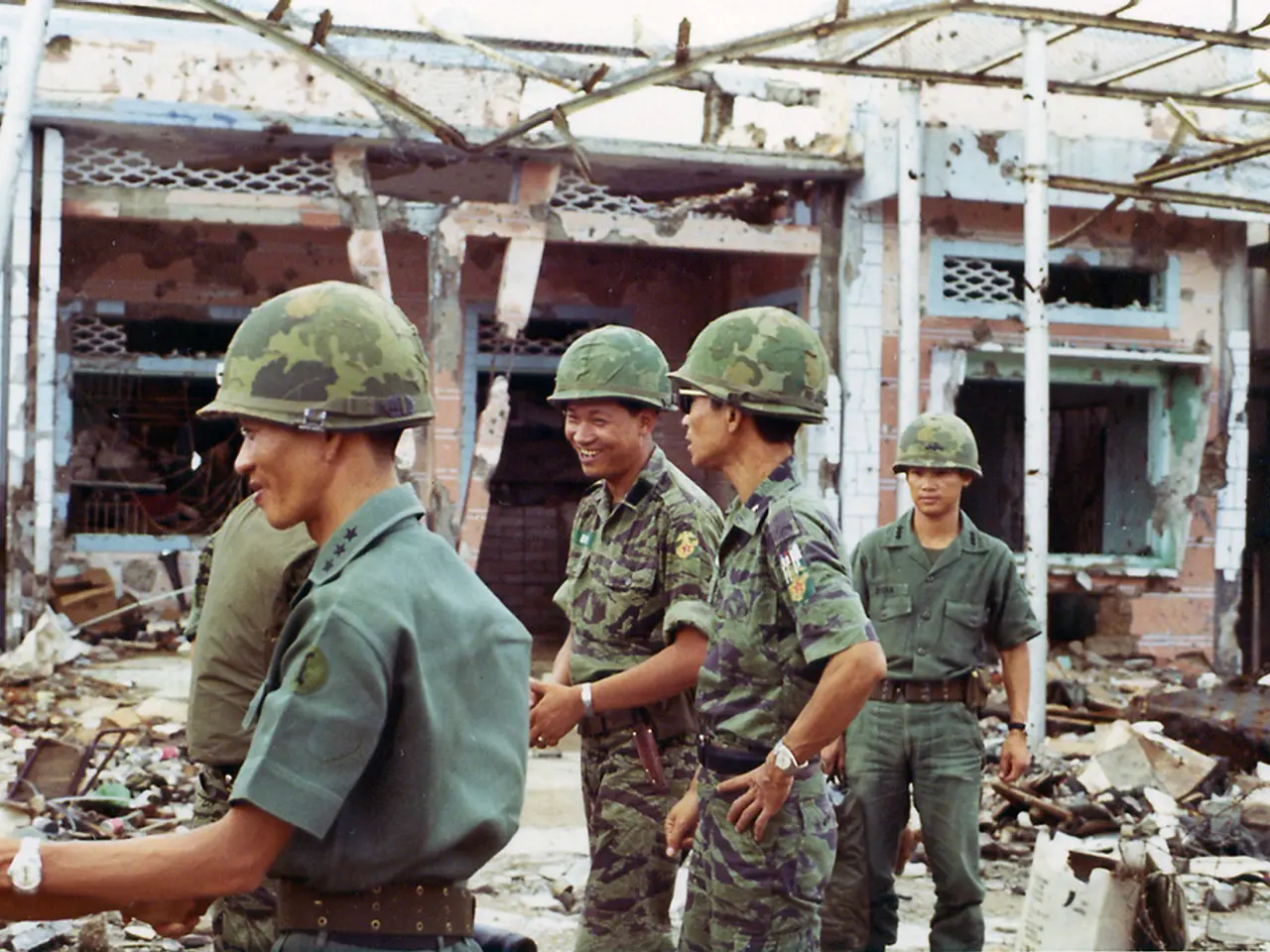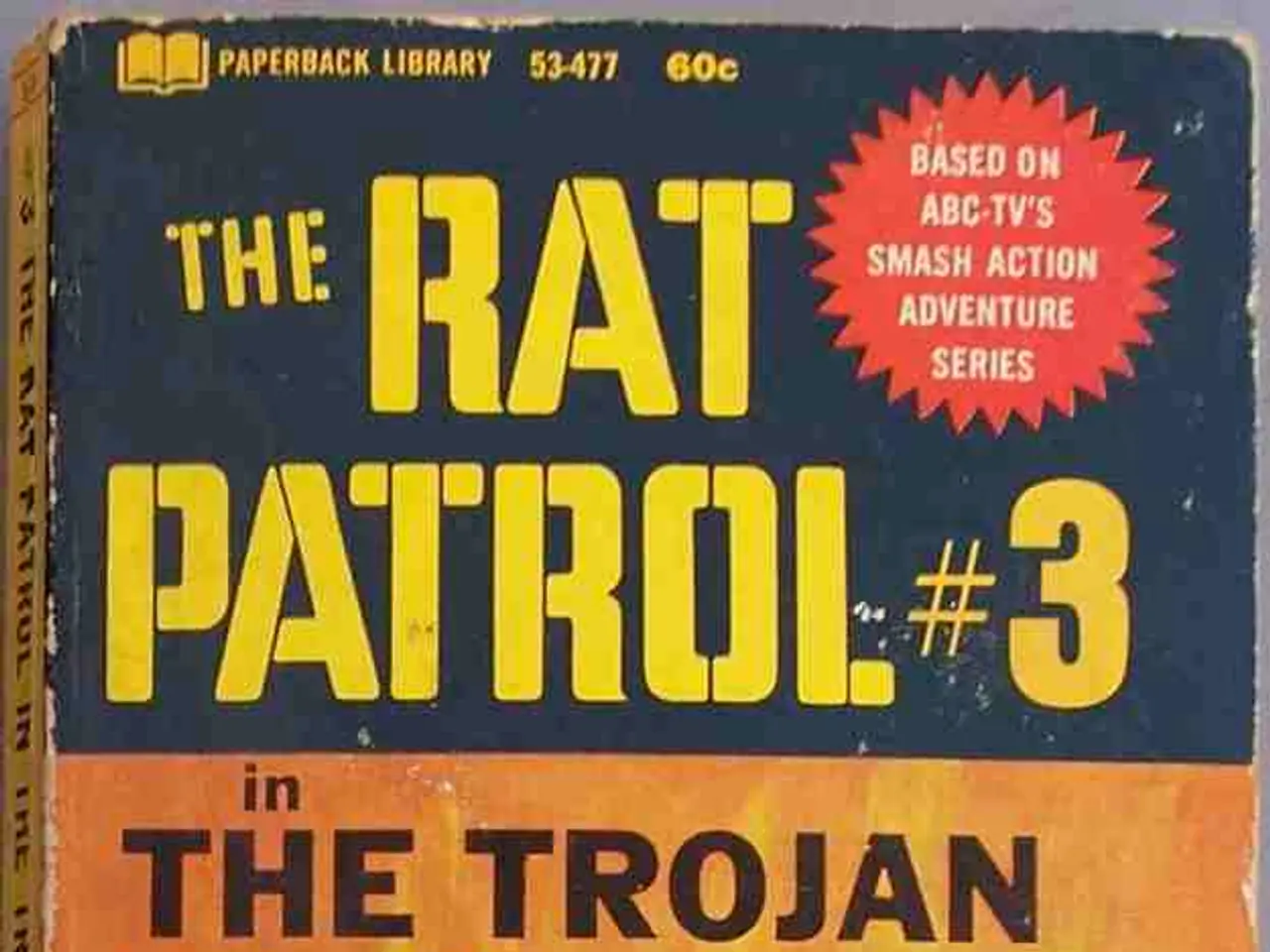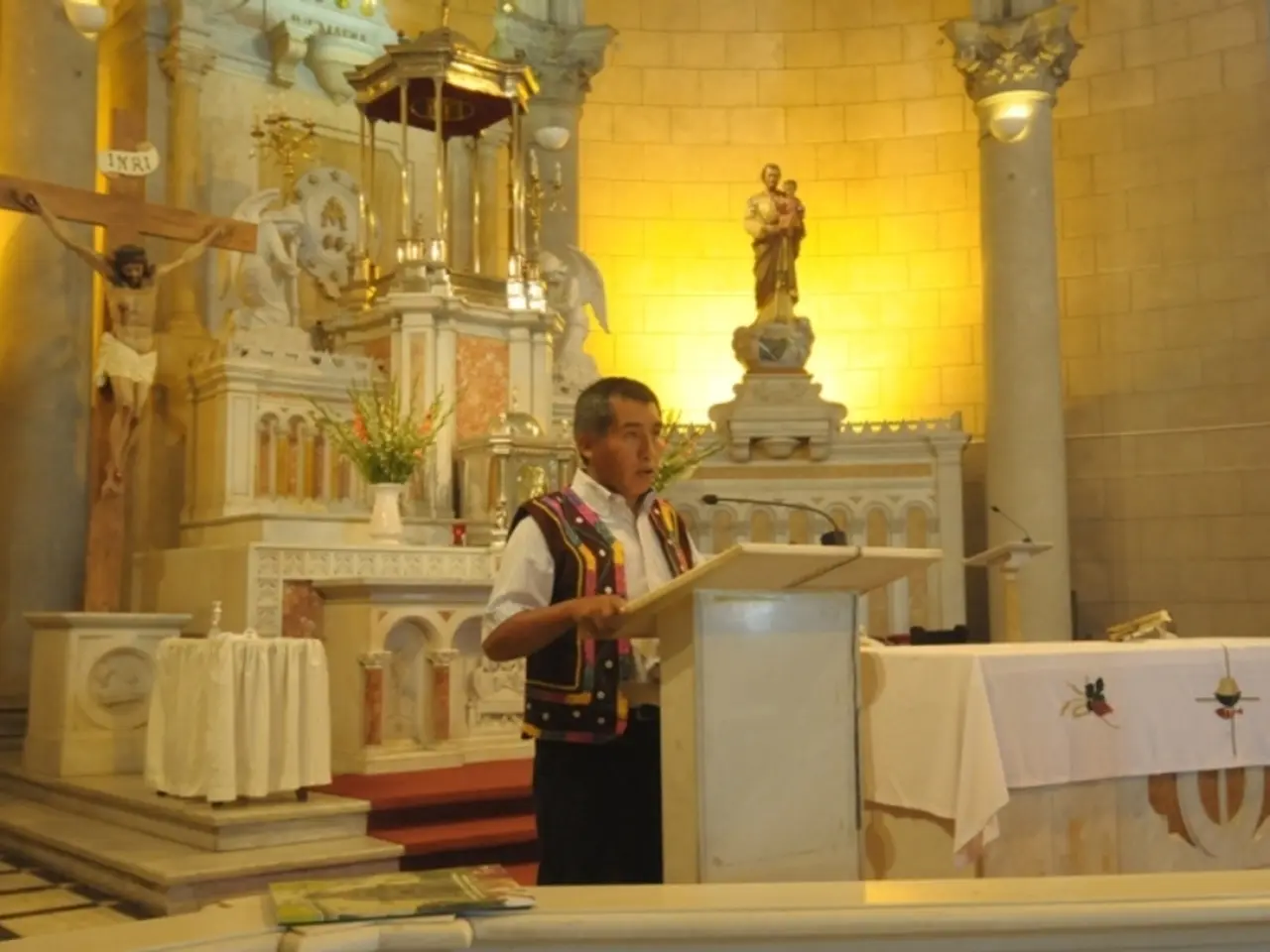Uncovering of Gestapo Victims' Remains, Hall in Tyrol on May 12, 1945
In the chaotic final months of World War II, the city of Innsbruck, Austria, was a hotbed of activity. The once tranquil alpine town had been annexed by Nazi Germany in 1938 and had seen its fair share of hardship, including heavy air raids between 1943 and April 1945 [1].
During this tumultuous period, the US Army arrived in Innsbruck, and with them came a mission to investigate war crimes. One of the key figures in this investigation was Lt. Bert C. Engel, a US investigator who played a pivotal role in uncovering the atrocities committed by Nazi officers in the city.
Among the officers under investigation were Max Nedwed, the head of the Gestapo in Innsbruck, and SS Untersturmführer Martin Schott, the commander of the work education camp Reichenau. On the evening of April 23, 1945, Schott executed eight Soviet and Polish prisoners of war [2].
On April 24, 1945, Nedwed buried nine victims outside the cemetery in Hall [3]. The crimes committed by Schott were discovered shortly after the occupation of Innsbruck, and the US Army conducted an investigation into these war crimes.
The department for the investigation of war crimes in the 7th US Army conducted the exhumation of the buried victims on May 12, 1945 [4]. A photograph from this day shows Lt. Bert C. Engel leading Martin Schott to the exhumed bodies, with Franz Ringer, an Innsbruck police officer and a former inmate of Dachau concentration camp, standing in the background, offering his support to the US military authorities [5].
The city of Innsbruck had housed subcamps of Dachau concentration camp, with notable prisoners detained as hostages [1]. However, the specific details of the war crimes committed by Nedwed, Schott, and other Nazi officers in Innsbruck during April 1945 remain unclear from the general sources retrieved.
For a more precise understanding of these alleged war crimes, specialized historical archives, war crimes trial records, or detailed studies on Nazi atrocities in Innsbruck around April 1945 might be required, as they are not present in the general sources available.
Robert Moser, a resident of Innsbruck, was a victim of these atrocities. He was employed by an electrical business owned by Moser and had a French foreign worker, Fred Mayer, working for him [6]. Moser was tortured to death by Gestapo officers, and his body was transported from the Gestapo building in Herrengasse 1 on April 24 [7].
The search for justice and the truth about the war crimes committed in Innsbruck during this period continues, shedding light on a dark chapter in the city's history.
References: 1. Innsbruck during World War II 2. The Execution of Mussolini 3. War Crimes in Innsbruck, Austria 4. The Investigation of War Crimes in Innsbruck 5. Photograph of the Exhumation of Victims in Innsbruck 6. Fred Mayer, an OSS Agent 7. Robert Moser, a Victim of War Crimes
The investigation into war crimes during the chaotic final months of World War II in Innsbruck, Austria, was crucial to uncovering atrocities committed by Nazi officers, such as Max Nedwed and SS Untersturmführer Martin Schott. The crimes committed, including executions of prisoners and murders of civilians, are only partially known from general sources, and further study of historical archives, war crimes trial records, or detailed studies on Nazi atrocities in Innsbruck may provide a more precise understanding of these events. Meanwhile, the search for justice continues, shedding light on a dark chapter in the city's history and bringing attention to those, like Robert Moser, who fell victim to these war-and-conflicts-related crimes. Additionally, the field of politics and the general-news media have been instrumental in bringing these crimes to light and pushing for accountability. Crime-and-justice efforts, both then and now, have played a significant role in the quest for truth and understanding.







